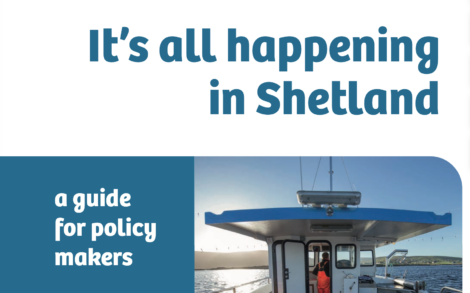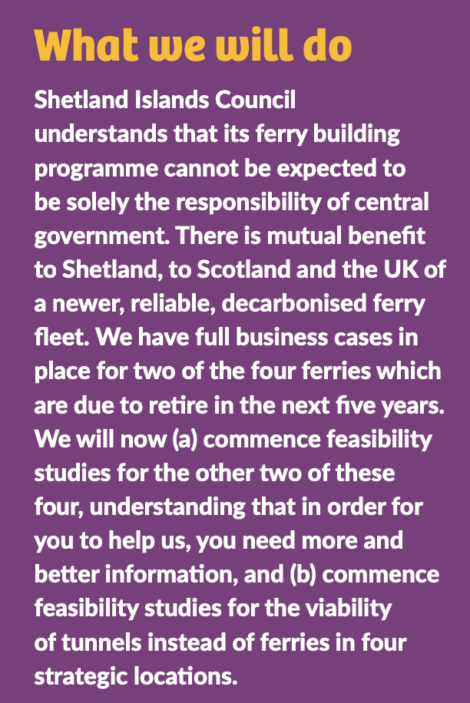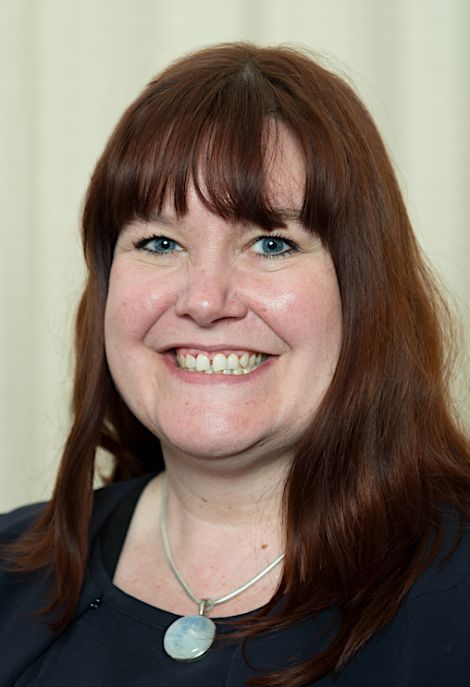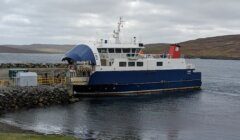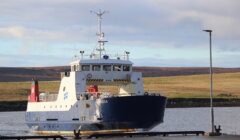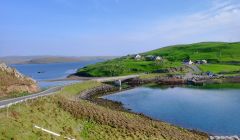Council / It’s all happening in Shetland? Brochure outlines ways governments can invest in isles
Included in the brochure is a pledge from the council to carry out feasibility studies on fixed links in four locations
A BROCHURE encouraging the UK and Scottish governments to invest in Shetland has received positive feedback so far, according to council chief executive Maggie Sandison.
The local authority’s It’s All Happening in Shetland document, launched last year, highlights that “we can’t do it on our own” when it comes to areas like transport and digital connectivity.
It also includes a number of pledges from Shetland Islands Council itself – including that it will “now commence feasibility studies for the viability of tunnels instead of ferries” in four locations – Unst, Yell, Whalsay and Bressay.
Speaking to Shetland News, however, Sandison said funding has not yet been identified for work on exploring a fixed link between Unst and Yell – despite it appearing to be at the top of the agenda as the SaxaVord Spaceport edges closer to construction.
“But the budget gets set and then if we need to progress something, then we can secure the funding for it,” Sandison said.
“The feasibility I suppose gets worked through as we start to look at the options appraisal though the business case methodology.
“So we will clearly need to start working through those options and engaging with the business case that we need to do for Unst.”
The brochure paints of a picture of Shetland being on the “outer edges of Scotland’s and the UK’s map, but in the inner circle of Scotland’s and the UK’s society and economy”.
Areas of particular opportunity include energy, aquaculture and the space industry, but challenges caused by Shetland’s island location are a key feature.
It has been given to politicians and policymakers to make the case for further investment in Shetland.
Included are a number of specific suggestions around how the Scottish and UK governments could help further development in Shetland.
Become a member of Shetland News
This includes committing to fund replacement Fair Isle and Whalsay ferries, and discussing with the council the “appetite for tunnel building as an alternative to ferries in viable locations”.
There is a pledge from the council itself to commence feasibility studies for replacement ferries on the Bluemull Sound and Papa Stour services due to the age of the vessels.
The brochure also contains a suggestion to direct specific funding to Shetland – outside of the Scottish Government’s R100 programme – to allow the council to provide isles-wide ultrafast connectivity itself.
“This is a win-win; the Government will not have to deal with the inevitable fallout of R100 failing to connect the hardest-to-reach, and the people of Shetland will enjoy the connectivity they have been promised,” the brochure states.
The energy industry and the shift to net zero is also given a mention.
The two governments are encouraged to commit to joint discussions with the council on the ‘Shetland tariff’ idea, which would see cheaper electricity for residents due to the isles being a net exporter of power once the Viking Energy wind farm goes live in 2024.
The UK Government is also encouraged to introduce a heavy industry tariff exemption to make electrification of new oilfield developments to the west of Shetland using Viking Energy as the power supplier commercially viable.
There is also suggestion the Scottish Government could declare Shetland’s wind and tidal energy production an ‘enterprise zone’, while there is a call for government grants for activity like hydrogen production.
Sandison said the brochure has been well received by government representatives so far.
It was used in recent talks with UK Government minister for Scotland Iain Stewart, and it was also in Sandison and leader Steven Coutts’ arsenal when they held talks in Edinburgh earlier this year.
“Everybody who has seen it has been really positive about the story that we’re telling,” Sandison said.
“We had been of an opinion that maybe people don’t always understand what Shetland contributes to the UK and to Scotland, and we wanted to really position Shetland as making the contribution on a scale that is much bigger than our population would suggest.
“Everybody has said that the clarity of the asks is really valuable, because I think sometimes when we go into conversations with UK Government and Scottish Government, they will say ‘what do you need from us’. So we’ve been very clear about this is what we need, and this is why we need it.”
It also includes a section detailing ‘what if it doesn’t happen’.
“Our opportunities – energy, aquaculture, space – can help to normalise Shetland’s demographics,” it says.
“But without your help to make it happen, we are worried about the long-term demographic outlook of these remote islands.”
There is also stark warning over the prospect of fuel poverty numbers rising in Shetland.
“If we don’t square this circle, with a Shetland Tariff, then our collective efforts to transition to renewables, and retain and attract a local population, will mean very little,” it says.
Become a member of Shetland News
Shetland News is asking its many readers to consider paying for membership to get additional features and services: -
- Remove non-local ads;
- Bookmark posts to read later;
- Exclusive curated weekly newsletter;
- Hide membership messages;
- Comments open for discussion.
If you appreciate what we do and feel strongly about impartial local journalism, then please become a member of Shetland News by either making a single payment, or setting up a monthly, quarterly or yearly subscription.
















